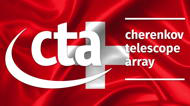Speakers
Description
The $\eta$ Carinae binary system is the first $\gamma$-ray binary ever observed which does not contain a compact object. It can be considered as a natural laboratory to study particle acceleration and $\gamma$-ray emission. Indeed the dense wind of the primary star shocks against the fast light wind coming from the companion star, creating the conditions to accelerate particles up to relativistic energies via Fermi mechanism. These relativistic particles subsequently dissipate energy as non-thermal radiation. Fermi-LAT and H.E.S.S. detections of $\eta$ Carinae confirm such hypotheses.
Hydrodynamic simulations provide a convincing match to the observations if a few percent of the wind mechanical energy dissipated in the shock goes into particle acceleration. The intrinsic $\pi^0$ decay spectrum is a complex convolution of the maximum energy, luminosity, particle drift and obscuration. Accelerated particles cool down mainly via inverse-Compton, synchrotron radiation, and proton-proton collisions. High-energy $\gamma$-rays interact also with the field of anisotropic UV photons emitted by both luminous stars, creating $e^\pm$ pairs and strongly modifying the observed spectrum. Quick variations of the optical depth are expected along the orbit, due to changes in shape, position, and gas density of the shocked region. Various CTA simulations confirm that flux variability down to few days timescale could be detected above 30 GeV. These variations could disentangle the intrinsic particle spectral cut off from that related to $\gamma$-$\gamma$ opacity and determine the flux of relativistic protons and positrons injected in the interstellar medium, the geometry of the colliding wind region and the magnetic field configuration, as well as the geometrical orientation of the binary system. CTA will also enlighten the nature of the high-energy component, the mechanisms and the percentage of kinetic energy channelled into particle acceleration.




